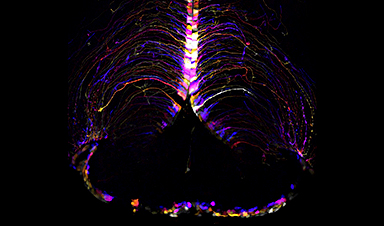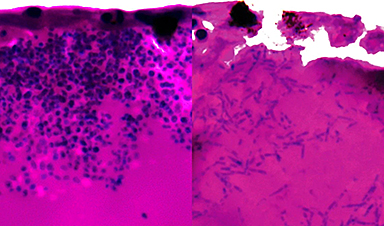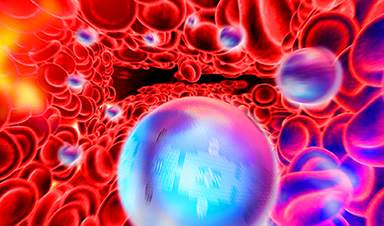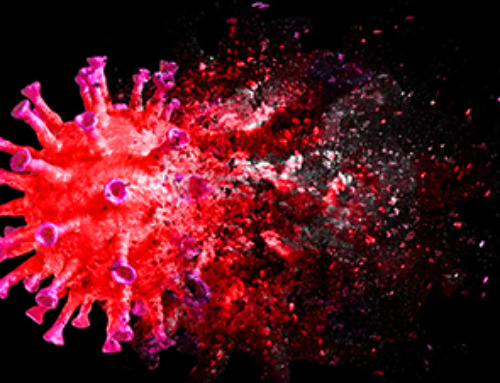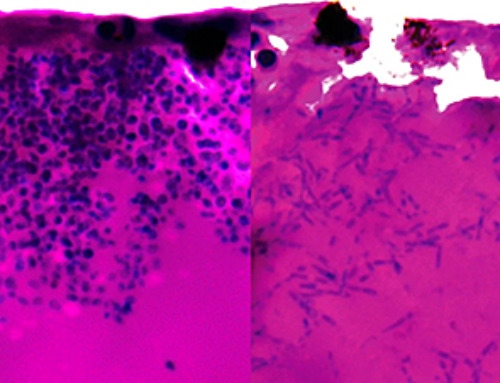As our body ages, not only joints, bones and muscles wear out, but also our nervous system. Nerve cells die, are no longer fully replaced, and the brain shrinks. “Aging is the most important risk factor for Alzheimer’s disease and many other devastating brain diseases,” says Richard Hodes of the National Institutes of Health (NIH). But what exactly happens in our minds as we age, and which parts of the brain age the fastest?
A look into the brains of young and old mice
A team led by Kelly Jin from the Allen Institute for Brain Science in Seattle has now investigated this in more detail. To do this, the neuroscientists compared what happens in the brains of two-month-old “young” and 18-month-old “old” mice. The “old” mice correspond roughly to the brain age of people in older middle age.
The researchers sequenced the RNA of a total of 1.2 million brain cells from 16 brain regions and thus mapped which genes are active in which brain region and which cell types. The tests covered about 35 percent of the entire mouse brain.
Some cells age faster
This showed that some brain cells are more sensitive and age faster than others. In the older mice, these cells showed a significantly different pattern of gene activity than in the young animals, and the contrast was stronger than in other brain cells. In total, around 2,500 genes were more or less active than at a young age, but not equally in all cells.
Most of these sensitive cell types were glial cells, known as the supporting cells of the brain. They do not transmit signals themselves, but support the neurons in transmitting signals through neurotransmitters and support structures. The cells that changed particularly strongly with age included microglia and border-associated macrophages, oligodendrocytes, tanycytes and ependymal cells, as Jin and her colleagues found.
Does altered gene activity promote inflammation and dementia?
It was striking that in these cells in the aging brain, those genes that are associated with inflammation and the immune system as well as the blood vessel cells of the brain were more active. The age-related changes could therefore promote inflammation.
On the other hand, genes related to neuronal structure and function were less active than in young brain cells. This suggests that these cells no longer adequately protect and support neurons, making it easier for neurodegenerative diseases such as dementia to occur.
“Our hypothesis is that these cell types become less efficient at integrating signals,” says Jin. “And this loss of efficiency somehow contributes to what we know as aging in the rest of our bodies.”
Aging hotspot in the hypothalamus
At a certain point in the brain, adjacent to the third ventricle of the hypothalamus, these two effects even occurred together. The third ventricle is an important pipeline through which the cerebrospinal fluid flows, exchanging hormones and nutrients between the hypothalamus and the body. According to the study, there is an aging hotspot in the aging brain where the nerve cells wear out particularly quickly.
At this turntable, the researchers also found cell types with strongly altered gene activity – including tanycytes, ependymal cells and neurons – that are important for nutrient and energy metabolism. Jin and her colleagues conclude that brain aging may also be related to diet and other lifestyle factors such as sleep. Previous studies also suggest that a balanced diet, intermittent fasting or calorie restriction can slow down the aging process of the brain.
Hope for new therapies against aging
“These results provide a very detailed map of which brain cells may be most affected by aging,” Hodes says. “This new map could fundamentally change the way scientists think about how aging affects the brain, and also provides guidance for developing new treatments for age-related brain diseases.”
In particular, the aging hotspot in the hypothalamus is now to be researched in more detail in follow-up studies. Together with the knowledge of which cell types need to be specifically treated, this could lead to the development of new drugs and nutritional strategies that delay the aging process, maintain the function of nerve cells and prevent Alzheimer’s and Co. The knowledge could therefore help to maintain brain health into old age. (Nature, 2025; doi: 10.1038/s41586-024-08350-8)
Sources: Allen Institutes, NIH
News
AI Helped Scientists Stop a Virus With One Tiny Change
Using AI, researchers identified one tiny molecular interaction that viruses need to infect cells. Disrupting it stopped the virus before infection could begin. Washington State University scientists have uncovered a method to interfere with a key [...]
Deadly Hospital Fungus May Finally Have a Weakness
A deadly, drug-resistant hospital fungus may finally have a weakness—and scientists think they’ve found it. Researchers have identified a genetic process that could open the door to new treatments for a dangerous fungal infection [...]
Fever-Proof Bird Flu Variant Could Fuel the Next Pandemic
Bird flu viruses present a significant risk to humans because they can continue replicating at temperatures higher than a typical fever. Fever is one of the body’s main tools for slowing or stopping viral [...]
What could the future of nanoscience look like?
Society has a lot to thank for nanoscience. From improved health monitoring to reducing the size of electronics, scientists’ ability to delve deeper and better understand chemistry at the nanoscale has opened up numerous [...]
Scientists Melt Cancer’s Hidden “Power Hubs” and Stop Tumor Growth
Researchers discovered that in a rare kidney cancer, RNA builds droplet-like hubs that act as growth control centers inside tumor cells. By engineering a molecular switch to dissolve these hubs, they were able to halt cancer [...]
Platelet-inspired nanoparticles could improve treatment of inflammatory diseases
Scientists have developed platelet-inspired nanoparticles that deliver anti-inflammatory drugs directly to brain-computer interface implants, doubling their effectiveness. Scientists have found a way to improve the performance of brain-computer interface (BCI) electrodes by delivering anti-inflammatory drugs directly [...]
After 150 years, a new chapter in cancer therapy is finally beginning
For decades, researchers have been looking for ways to destroy cancer cells in a targeted manner without further weakening the body. But for many patients whose immune system is severely impaired by chemotherapy or radiation, [...]
Older chemical libraries show promise for fighting resistant strains of COVID-19 virus
SARS‑CoV‑2, the virus that causes COVID-19, continues to mutate, with some newer strains becoming less responsive to current antiviral treatments like Paxlovid. Now, University of California San Diego scientists and an international team of [...]
Lower doses of immunotherapy for skin cancer give better results, study suggests
According to a new study, lower doses of approved immunotherapy for malignant melanoma can give better results against tumors, while reducing side effects. This is reported by researchers at Karolinska Institutet in the Journal of the National [...]
Researchers highlight five pathways through which microplastics can harm the brain
Microplastics could be fueling neurodegenerative diseases like Alzheimer's and Parkinson's, with a new study highlighting five ways microplastics can trigger inflammation and damage in the brain. More than 57 million people live with dementia, [...]
Tiny Metal Nanodots Obliterate Cancer Cells While Largely Sparing Healthy Tissue
Scientists have developed tiny metal-oxide particles that push cancer cells past their stress limits while sparing healthy tissue. An international team led by RMIT University has developed tiny particles called nanodots, crafted from a metallic compound, [...]
Gold Nanoclusters Could Supercharge Quantum Computers
Researchers found that gold “super atoms” can behave like the atoms in top-tier quantum systems—only far easier to scale. These tiny clusters can be customized at the molecular level, offering a powerful, tunable foundation [...]
A single shot of HPV vaccine may be enough to fight cervical cancer, study finds
WASHINGTON -- A single HPV vaccination appears just as effective as two doses at preventing the viral infection that causes cervical cancer, researchers reported Wednesday. HPV, or human papillomavirus, is very common and spread [...]
New technique overcomes technological barrier in 3D brain imaging
Scientists at the Swiss Light Source SLS have succeeded in mapping a piece of brain tissue in 3D at unprecedented resolution using X-rays, non-destructively. The breakthrough overcomes a long-standing technological barrier that had limited [...]
Scientists Uncover Hidden Blood Pattern in Long COVID
Researchers found persistent microclot and NET structures in Long COVID blood that may explain long-lasting symptoms. Researchers examining Long COVID have identified a structural connection between circulating microclots and neutrophil extracellular traps (NETs). The [...]
This Cellular Trick Helps Cancer Spread, but Could Also Stop It
Groups of normal cbiells can sense far into their surroundings, helping explain cancer cell migration. Understanding this ability could lead to new ways to limit tumor spread. The tale of the princess and the [...]
